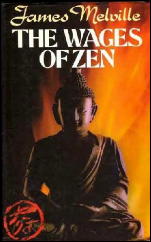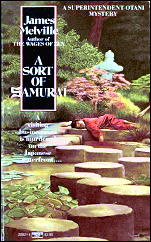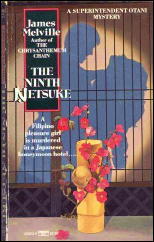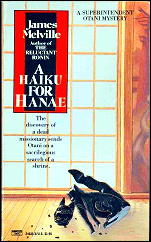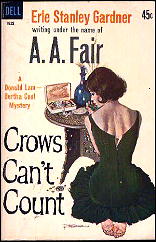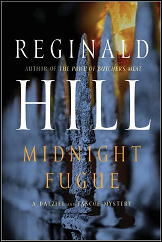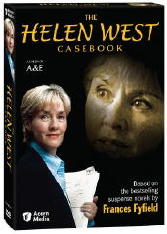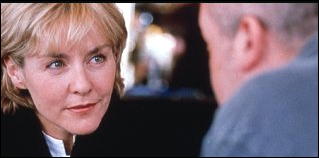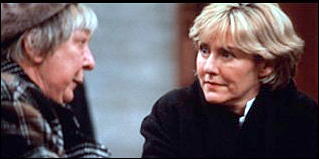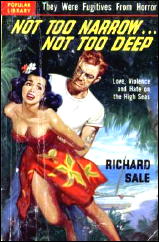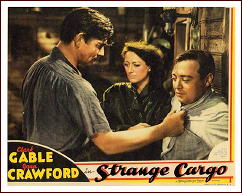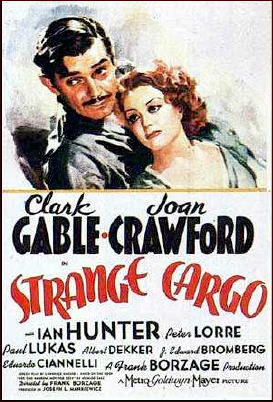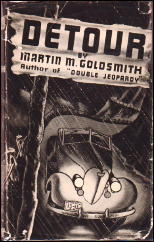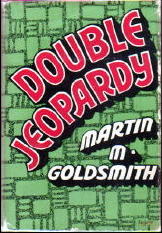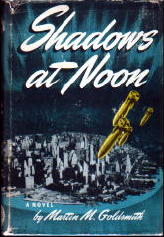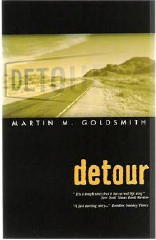MARTIN M. GOLDSMITH – Detour: An Extraordinary Tale.
O’Bryan House, Publishers; trade paperback, 2005. Hardcover edition: Macauley Co., 1939.
The people behind O’Bryan House, and that includes Richard Doody who wrote the introduction, have done the fans of noir fiction a tremendous favor in reprinting this book. If you are thinking, “What book?” and I imagine many of you are, you are in exactly the same position I was when I first heard about it.
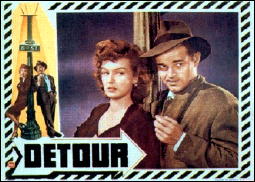
Now of course there is the Movie Version, which perhaps you have heard of. If there ever were a poll of noir film fans, the film that is based on this book would have to rank in the top two or three of all time. Forgive me, though, if I don’t review the movie, although I will have to admit that scenes from it were continually in my head when I was reading the book. I’ll review the book, though, if you so allow, and whatever movie you’re thinking of, I never heard of it.
Let me get back to the “favor” that I mentioned in the first paragraph. There are [at the time of this writing] two copies of the First Edition on ABE, neither of which has a dust jacket. The asking price for the first is $2500, and no, I did not lose the decimal point, so you can get up off your hands and knees and stop looking for it. The second copy is a mere $3500, but that one is signed by Mr. Goldsmith, who died in 1994, with a long inscription, so it is probably worth the money.
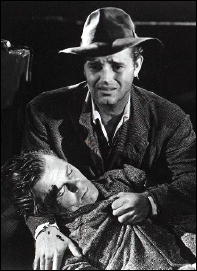
There may be other ways to obtain the paperback edition, but one good way may be to order it from Amazon, and at an even more reasonable $14.95. There should be other outlets where it’s available, and it’s a bargain price, no matter the venue.
To get started on the review, though, I hope that you don’t mind if I simply start off by quoting to you the first four paragraphs or so.
Once again, if you are a fan of noir fiction, and if you were to tell me that you could put the book down after reading this, most of the first page, frankly, I wouldn’t believe you.
One way or another, you’d be lying to me. Either you’re no fan of noir fiction, or you’re picking the book back up again when I’m not looking.
The big grey roadster streaked by me and came to a halt fifty yards down the highway with screaming tires. I got my lungs full of the smell of hot oil and burning rubber. It choked me so that for a full minute I couldn’t breathe. Neither could I move; I just stood there staring stupidly at it and at the two black skid-marks the wheels left on the concrete. I was heading west, via the thumb-route, and had been waiting over three hours for a lift. I can’t remember exactly where I was at the time, but it was somewhere in New Mexico, between Las Cruces and Lordsburg.
It seemed kind of crazy, that car stopping. I had begun to believe that only old jalopies and trucks picked up hikers any more. Bums are generally pretty dirty and good cars have nice seats. Then, too, it was a lonesome stretch in there and plenty can happen on a lonesome stretch.
The guy driving the car yelled at me over his shoulder. “Hey, you! Are you coming?” He acted as though he was in a great hurry, for he goosed his engine impatiently so I’d shake a leg.
I snapped out of it. It was hot as a bastard and I guess the sun was getting me. Somewhere back along the line I had lost my hat and the top of my head seemed to be on fire. Anyway, the last two hours I had been waving at cars more or less mechanically, not expecting anyone to stop. A few hundred of them must have whizzed by without even slowing down a little to give me the once-over. You know, hitch-hiking isn’t as popular out west as it used to be. I suppose that is why the real bums stick to the rails.
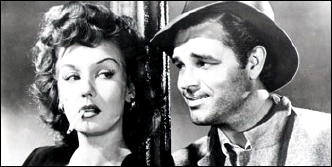
Telling this first part of the story is a down-on-his-luck jazz musician named Alex Roth. He is heading for California, and Hollywood in particular, since that is where his former live-in girl friend, Sue Harvey, has headed before him, only a week or ten days before they were to have gotten married. (She is the impulsive type, Alex tells the reader.)
Picking him up in the grey roadster is Charles Haskell, who has a wad of money in his billfold and who is not long for this world. His untimely death is an accident, but Alex knows that no one will believe him, given that small incident (thirty days) in Dallas, and given that he and Haskell do look alike… Well, you get the picture.
Backing up just a little, from page 32:
All right. Now you’ve reached the part where all the mess begins. You’ll probably take the rest of the story with a grain of salt or maybe just come right out and call me seven different brands of liar. It sounds fishy – but I can’t help that, any more than I could have helped what happened. Up to then I did things my way; but from then on something else stepped in and shunted me off to a different destination than the one I had planned for myself. And there was nothing in the world I could do to prevent it. The things I did were the only things left open for me to do. I had to take and like whatever came along.
For when I pulled open that door, Mr. Haskell fell and cracked his skull on the running-board. He went out like a light.
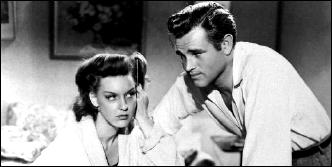
In the meantime, Sue herself is not doing so well. From pages 47-48, she expresses to the reader her distinctly discouraged view of Hollywood, where she is getting by (barely) as a waitress, and not as the star she had thought she was destined to be.
Or if so, not yet:
It scarcely seemed believable, but only a few months before I too had thought Hollywood a glamorous place. I had arrived so thoroughly read-up on the misinformation of the fan magazines that it took me a full week before I realized that the “Mecca” was no more than a jerkwater suburb which publicity had sliced from Los Angeles – a suburb peopled chiefly by out and out hicks (the kind of dumbbells who think they are being wild and sophisticated if they stay up all night) or by Minnesota farmers and Brooklyn smart alecks who think they know it all. I soon saw that here were only two classes of society: the suckers, like myself, who had come to take the town; and the slickers who had come to take the suckers. Both groups were plotters and schemers and both on the verge of starvation.
Goldsmith is less convincing as the voice of Sue Harvey than he is speaking as Alex Roth, but his portrayal of her is solidly etched in weariness and desire, and if one of the two of his two leading characters were to be considered hard-boiled, you have to know that it is not Alex.
And returning to that half of the story, the reader’s brain will yell out in warning (but to no avail) when Alex, in turn, picks up a hitch-hiker, female, a woman named Vera, and man, does the story explode from there, eventually taking a leap with one staggering coincidence that exceeds even the often crazy incoherence of a Cornell Woolrich short story or novel, but in this kind of story, the stops are usually pulled all of the way out, and if they weren’t, you’d complain.
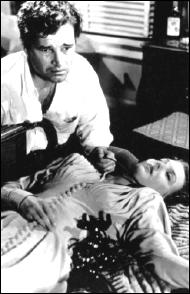
Backing up one more time, from page 84, after Vera has agreed to the lift, saying as she gets in, “Los Angeles is good enough for me, mister.”
I kept looking at her out of the corner of my eye for a long time, wondering who she was, why she was going to Los Angeles and where she had come from in the first place. I has asked her all of those questions when she first got in the car, but her answers had all been vague. Her name was Vera, though. I didn’t quite catch the last part. Vera’s manner puzzled me in a way. She didn’t seem at all grateful for the lift I was giving her. She acted as though it were only natural, that it was coming to her. I had half-expected her to go into ecstasies when I told her I was going all the way to the coast. However, when I said I’d take her to Los Angeles, she wasn’t at all surprised or pleased. She merely nodded her head and shot me a look I couldn’t understand. It was a funny look, shrewd and calculating, and a couple of times I turned my head and caught it again. That gave me the notion that this dame was a little simple upstairs.
These are the players. What you have just read includes considerably more quoting than I usually do, but there is little here, I guarantee you, that you will not glean from reading the few sentences of descriptive material on the back cover. There is plenty of story left, and on very nearly every one of the 158 pages in this book, there is another passage as quotable as any one of these.
To my mind, this is the great undiscovered American novel, told from the underside, and somehow in its understated raciness, marvelously reminiscent of those rather notorious pre-Code days at the movies. Which brings us back around to one of my opening comments. They did make a movie out of this book, did you know?

